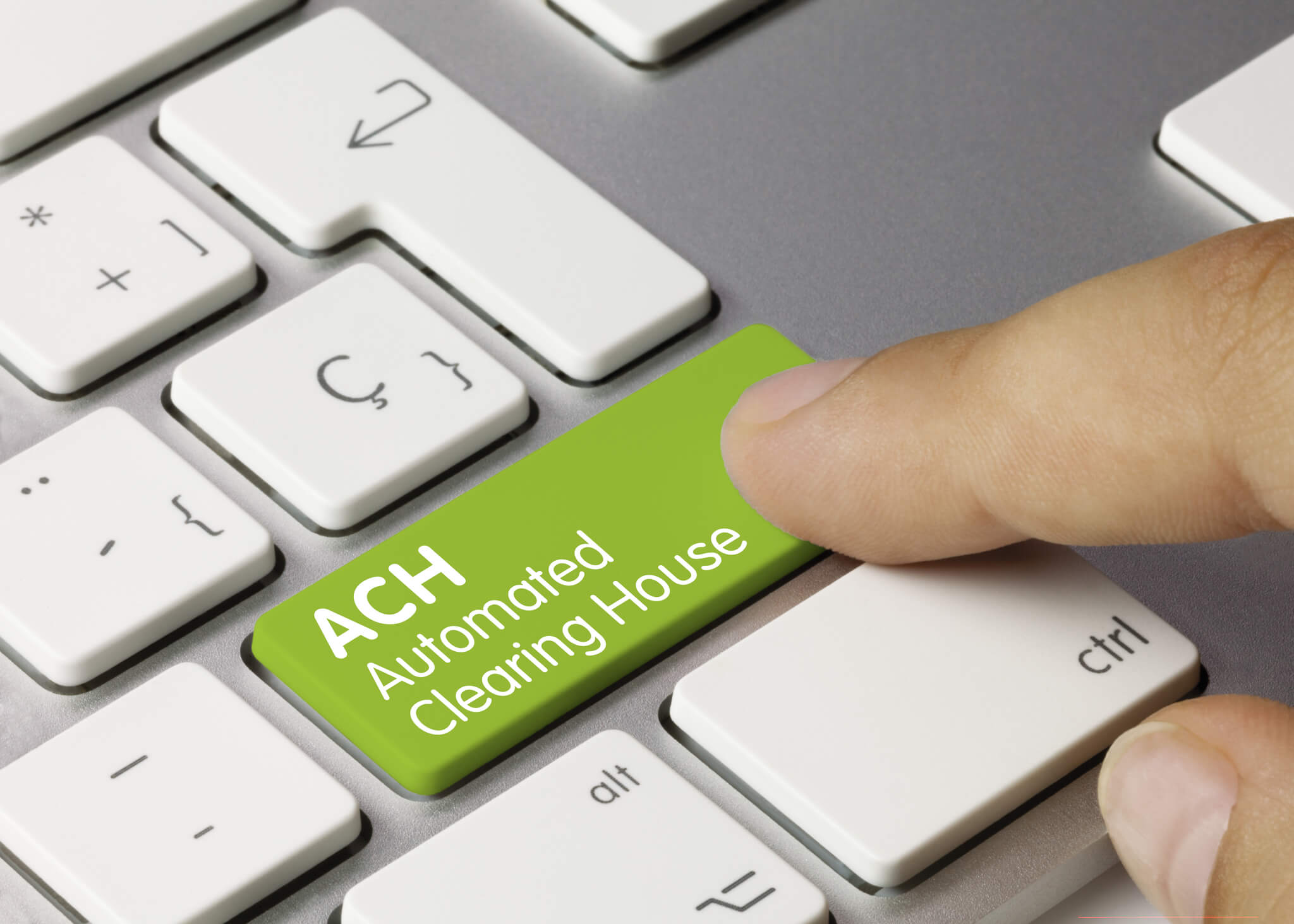How ACH Payments Work in the Cloud
In today’s digital age, businesses are constantly seeking efficient and secure payment solutions. One such solution that has gained popularity is Automated Clearing House (ACH) payments in the cloud. ACH payments provide a reliable and cost-effective method for businesses to transfer funds electronically. When combined with the cloud, ACH payments offer even greater convenience and flexibility.
This article will explore the basics of Automated Clearing House (ACH) payments, the benefits of using them in the cloud, how they are processed, security measures, integration into cloud-based systems, common challenges and solutions, best practices for implementation, and frequently asked questions.
Understanding the Basics of ACH Payments
ACH payments are electronic transfers of funds between banks in the United States. They are commonly used for various transactions, such as direct deposits, bill payments, and business-to-business payments. Automated Clearing House (ACH) payments are processed through the Automated Clearing House network, which is a secure and efficient system managed by the National Automated Clearing House Association (NACHA). This network connects financial institutions and facilitates the transfer of funds.
To initiate an ACH payment, the sender must obtain the recipient’s bank account information, including the routing number and account number. This information is used to identify the recipient’s bank and account, ensuring that the funds are deposited into the correct account. Once the payment is initiated, it is processed through the ACH network, and the funds are typically deposited into the recipient’s account within a few business days.
Benefits of Using ACH Payments in the Cloud
The integration of ACH payments with cloud-based systems offers several advantages for businesses. Firstly, it provides convenience and flexibility. Cloud-based systems allow businesses to access their payment processing capabilities from anywhere, at any time. This means that businesses can initiate and manage Automated Clearing House (ACH) payments remotely, without the need for physical infrastructure or on-premises software.
Secondly, using ACH payments in the cloud can significantly reduce costs. Traditional payment methods, such as paper checks or wire transfers, often incur high transaction fees. In contrast, ACH payments are typically more cost-effective, with lower transaction fees. Additionally, the cloud eliminates the need for physical checks, envelopes, and postage, further reducing costs associated with paper-based payments.
Furthermore, ACH payments in the cloud offer improved efficiency and speed. The automated nature of Automated Clearing House (ACH) payments eliminates the need for manual processing, reducing the risk of errors and delays. Cloud-based systems can also streamline payment workflows, allowing businesses to automate recurring payments and schedule payments in advance. This not only saves time but also ensures timely and accurate payments.
How Automated Clearing House (ACH) Payments are Processed in the Cloud
The processing of ACH payments in the cloud involves several steps. Firstly, the sender initiates the payment through their cloud-based payment system. This system securely collects the necessary payment information, such as the recipient’s bank account details and the payment amount. The sender’s system then encrypts and transmits this information to the ACH network.
Once the payment information reaches the ACH network, it undergoes a series of validation checks. These checks ensure that the payment details are accurate and complete, reducing the risk of errors or fraudulent activity. The ACH network also verifies that the sender has sufficient funds in their account to cover the payment.
After the validation process, the ACH network routes the payment to the recipient’s bank. The recipient’s bank receives the payment information and credits the funds to the recipient’s account. This process typically takes a few business days, although same-day ACH processing is also available for certain transactions.
Security Measures for ACH Payments in the Cloud
Security is a critical aspect of ACH payments in the cloud. As electronic transactions, ACH payments are vulnerable to various security threats, such as unauthorized access, data breaches, and fraud. To mitigate these risks, cloud-based payment systems implement robust security measures.
One of the primary security measures is encryption. Encryption ensures that sensitive payment information is securely transmitted and stored. Cloud-based payment systems use strong encryption algorithms to protect data in transit and at rest. This ensures that even if the data is intercepted, it remains unreadable and unusable to unauthorized individuals.
Another security measure is multi-factor authentication. Cloud-based payment systems often require users to provide multiple forms of identification, such as a password and a unique code sent to their mobile device. This adds an extra layer of security, making it more difficult for unauthorized individuals to gain access to the system.
Additionally, cloud-based payment systems employ advanced fraud detection and prevention mechanisms. These mechanisms analyze payment patterns, detect anomalies, and flag suspicious transactions for further investigation. Machine learning algorithms are often used to continuously improve the accuracy of fraud detection and reduce false positives.
Integrating ACH Payments into Cloud-based Systems
Integrating ACH payments into cloud-based systems is a straightforward process that can be achieved through various methods. One common approach is to use application programming interfaces (APIs). APIs allow different software systems to communicate and exchange data seamlessly. By integrating an ACH payment API into a cloud-based system, businesses can easily initiate and manage ACH payments without the need for manual intervention.
Another integration method is through payment gateways. Payment gateways act as intermediaries between the cloud-based system and the ACH network. They securely transmit payment information to the ACH network and provide real-time status updates on payment transactions. Payment gateways often offer additional features, such as reporting and reconciliation tools, to further streamline the payment process.
Furthermore, some cloud-based accounting and invoicing software provide built-in ACH payment capabilities. These software solutions allow businesses to generate invoices and accept ACH payments directly from their cloud-based platform. This eliminates the need for separate payment systems and simplifies the payment collection process.
Common Challenges and Solutions for ACH Payments in the Cloud
While ACH payments in the cloud offer numerous benefits, businesses may encounter certain challenges during implementation. One common challenge is ensuring compatibility between different systems. Businesses may have existing cloud-based systems that need to be integrated with ACH payment capabilities. In such cases, it is crucial to choose payment solutions that offer seamless integration options or provide APIs for custom integration.
Another challenge is managing compliance and regulatory requirements. ACH payments are subject to various regulations, such as the NACHA Operating Rules and the Electronic Funds Transfer Act. Businesses must ensure that their cloud-based payment systems comply with these regulations to avoid penalties and legal issues. Working with payment solution providers that have experience in compliance can help businesses navigate these requirements effectively.
Furthermore, businesses must address the risk of fraud and data breaches. Cloud-based payment systems should implement robust security measures, such as encryption, multi-factor authentication, and fraud detection mechanisms, as discussed earlier. Regular security audits and updates are also essential to stay ahead of emerging threats and vulnerabilities.
Best Practices for Implementing ACH Payments in the Cloud
To ensure a successful implementation of ACH payments in the cloud, businesses should follow best practices. Firstly, it is crucial to thoroughly research and select a reputable payment solution provider. The provider should have a proven track record in handling ACH payments and offer secure and reliable cloud-based payment systems. Reading customer reviews and seeking recommendations can help businesses make informed decisions.
Secondly, businesses should carefully plan and test the integration of ACH payment capabilities into their cloud-based systems. This includes mapping out the payment workflows, ensuring compatibility between systems, and conducting thorough testing to identify and resolve any issues before going live. Engaging with the payment solution provider’s support team can provide valuable guidance during this process.
Additionally, businesses should educate their employees on ACH payment processes and security best practices. This includes training employees on how to initiate and manage ACH payments, as well as how to identify and report potential security threats. Regular training sessions and updates can help maintain a high level of awareness and ensure compliance with security protocols.
Frequently Asked Questions about ACH Payments in the Cloud
Q.1: What is the difference between ACH payments and wire transfers?
ACH payments are electronic transfers of funds between banks in the United States, typically used for direct deposits, bill payments, and business-to-business payments. Wire transfers, on the other hand, are immediate transfers of funds between banks, often used for urgent or international transactions.
Q.2: How long does it take for an ACH payment to be processed?
ACH payments typically take a few business days to be processed and deposited into the recipient’s account. However, same-day ACH processing is available for certain transactions, allowing funds to be transferred within the same business day.
Q.3: Are ACH payments secure?
Yes, ACH payments in the cloud can be secure if proper security measures are implemented. This includes encryption, multi-factor authentication, and fraud detection mechanisms. Businesses should choose reputable payment solution providers that prioritize security.
Q.4: Can ACH payments be reversed?
ACH payments can be reversed under certain circumstances, such as if the payment was made in error or if there was fraudulent activity. However, there are specific rules and procedures that must be followed to initiate a reversal.
Q.5: Can ACH payments be used for international transactions?
ACH payments are primarily used for domestic transactions within the United States. For international transactions, businesses typically use wire transfers or other international payment methods.
Conclusion
ACH payments in the cloud offer businesses a secure, cost-effective, and efficient method for transferring funds electronically. By leveraging the capabilities of cloud-based systems, businesses can enjoy the convenience of initiating and managing ACH payments from anywhere, at any time. The integration of ACH payments into cloud-based systems streamlines payment workflows, reduces costs, and improves efficiency.
However, businesses must prioritize security and compliance to mitigate risks associated with electronic transactions. By following best practices and working with reputable payment solution providers, businesses can successfully implement ACH payments in the cloud and reap the benefits of this modern payment solution.










